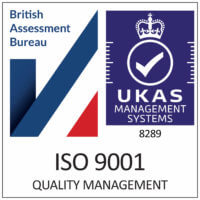Calculate the Quantity of Peat-Free All-Purpose Compost for Your Garden
Oct 11th 2023
Are you wondering how much peat-free all-purpose compost you need for your garden? Look no further! This article will guide you through the simple and straightforward calculation process, ensuring you get just the right amount of compost to nourish your plants and help them thrive. Whether you have a small patio garden or a sprawling backyard, calculating the quantity of compost needed will no longer be a mystery. So grab a cup of tea, sit back, and let’s unravel the fascinating world of peat-free all-purpose compost!
Calculate the Quantity of Peat-Free All-Purpose Compost for Your Garden
Are you wondering how much peat-free all-purpose compost you’ll need for your garden? Calculating the right quantity can ensure you have enough to feed your plants and promote healthy growth. In this article, we’ll guide you through the process, step by step, to determine the optimal amount of compost for your gardening needs.
Why Choose Peat-Free All-Purpose Compost?
Before we delve into the calculation process, let’s take a moment to understand why peat-free all-purpose compost is a wise choice for your garden. Peat-based composts have long been a popular option, but they come with environmental concerns. Peat extraction contributes to carbon dioxide emissions, habitat destruction, and loss of biodiversity. By opting for peat-free all-purpose compost, you can reduce your carbon footprint and help preserve peat bogs, which are valuable natural habitats.
Apart from the environmental impact, peat-free all-purpose compost offers numerous benefits for your garden. It enhances soil structure, improves drainage, and retains moisture. It also promotes healthy root growth, provides essential nutrients, and encourages beneficial microbial activity. Made from sustainable ingredients peat-free compost is an excellent choice for avid gardeners.
Factors to Consider
When calculating the quantity of peat-free all-purpose compost you’ll need, several factors come into play. By considering these factors, you can ensure accurate calculations and prevent over or underestimating your requirements.
- Types of Plants and Their Compost Needs: Different plants have varying compost requirements. Some may thrive with a thin layer of compost, while others, like vegetables and fruits, may benefit from a deeper compost application.
- Garden Design and Layout: The layout of your garden, whether it’s a traditional garden bed, raised beds, or containers, can influence the amount of compost needed. Raised beds and containers usually require more compost due to their limited soil volume.
Considering these factors will help you make accurate calculations and ensure your plants receive the optimal amount of compost.
Determining the Area of Your Garden
To calculate the quantity of peat-free all-purpose compost, you’ll first need to determine the area of your garden. This will give you a starting point for estimating the compost volume required.
- Measuring Garden Length and Width: Use a measuring tape or a long rope to measure the length and width of your garden accurately. Measure from the longest points for irregular-shaped gardens.
- Calculating Garden Area: Multiply the length by the width to calculate the area of your garden. For example, if your garden measures 8 meters long and 6 meters wide, the area is 48 square meters.
Determining the area is an essential first step in the calculation process, as it provides a foundation for estimating the volume of compost needed.
Assessing Soil Condition and Planting Depth
The condition of your soil and the desired planting depth will influence the amount of compost to apply. Assessing the soil’s texture, drainage, and the recommended planting depth for your chosen plants are crucial steps in the calculation process.
- Testing Soil Texture and Drainage: Take a small sample of your soil and feel it between your fingers. Sandy soil feels gritty, clay soil feels sticky, and loamy soil feels smooth and crumbly. Additionally, assess how well your soil drains. If it drains poorly, amendments like compost can help improve drainage.
- Identifying Planting Depths: Research the recommended planting depths for the plants in your garden. Some may require a shallow planting depth, while others may need a deeper planting depth. This information will help you determine the necessary compost depth for each area of your garden.
Estimating Compost Depth
Once you have assessed the planting depths for your garden, you can estimate the optimal compost depth. This is an important consideration to ensure your plants receive adequate nutrients and moisture.
- Recommended Compost Depth: As a general rule of thumb, aim for a compost depth of 5-10 centimeters for most plants. However, certain plants, like root vegetables, may require a deeper layer of compost.
- Considerations for Raised Beds or Containers: If you have raised beds or containers, you may need to adjust the compost depth based on their volume. Aim for a compost depth of at least 20-30 centimeters to account for the limited soil volume and ensure optimal plant nutrition.
By estimating the appropriate compost depth, you can provide your plants with the necessary conditions for healthy growth.
Calculating Compost Volume
Now that you have the garden’s area and estimated compost depth, it’s time to calculate the compost volume required to cover the entire garden.
- Converting Garden Area to Volume: Multiply the garden area by the desired compost depth. Using our previous example of a 48-square meter garden area and a compost depth of 5 centimeters, the volume of compost needed is 2.4 cubic meters (48 square meters x 0.05 meters).
- Calculating Volume for Different Compost Depths: If you have different areas in your garden with varying compost depths, calculate the volume for each area separately and sum them up to find the total compost volume needed.
Calculating the compost volume is a crucial step in ensuring you have enough to cover your garden adequately.
Accounting for Shrinkage
When applying compost, it’s important to account for the potential shrinkage that occurs as it settles over time. This ensures that you’ll have enough compost to feed your plants for an extended period.
- Understanding Compost Shrinkage: Compost naturally settles as organic matter decomposes, leading to a decrease in volume over time. Different compost blends may shrink at varying rates.
- Factors Affecting Shrinkage.
- Adjusting Compost Volume for Shrinkage: To account for shrinkage, it is recommended to add an extra 10-20% to the calculated compost volume. This will ensure you have enough compost even after settling occurs.
By considering shrinkage, you’ll be prepared for any decrease in compost volume over time and can maintain optimal soil nourishment for your plants.
Adjusting for Loss of Volume Over Time
In addition to shrinkage, it’s important to consider the potential loss of compost volume over time. Understanding how decomposition and settling can affect the volume will help you determine if future applications of compost are necessary.
- Considering Decomposition and Settling: As compost decomposes and settles into the soil, it gradually breaks down and integrates with the existing soil. This process leads to a loss of compost volume over time.
- Determining Loss of Volume Over Time: The rate of compost volume loss depends on the compost quality, environmental conditions, and the intensity of microbial activity in your garden. Observing and measuring the loss over time will give you valuable insights into any adjustments needed for future applications.
- Accounting for Future Loss: It’s advisable to take note of the loss of compost volume over time and adjust your calculations for future gardening seasons. This ensures that your plants continue to receive the necessary nutrients and organic matter as the compost breaks down.
Considering the potential loss of volume over time helps you plan for long-term garden maintenance and sustain healthy plant growth.






